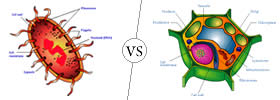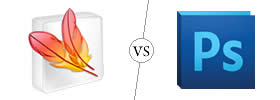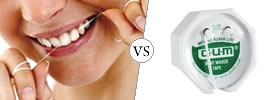Difference between Goods and Services
Key Difference: Goods are considered as tangible objects. Services are intangible commodities that cannot be touch, felt, tasted, etc.
Almost all things can be separated into goods and services. These are very different from each other, though in today’s world there are a variety of companies that offer both goods and services. Hence, it is often overlapping and companies are trained in both to offer proper goods as well as adequate services.
 In economics, goods are considered as tangible objects. These are obviously things that you can see, touch, smell, taste, etc. In order for a good to be classified as good, it must something a person can hold, taste, consume or use. Goods are also easily transferable from one person to another. Goods also have a physical dimension and take up space someplace. Dictionary.com defines ‘goods’ as, “possessions, especially movable effects or personal property; articles of trade; wares; merchandise.” Goods are often acquired in exchange of money or earlier it was traded for another good (i.e. wheat for rice, etc.).
In economics, goods are considered as tangible objects. These are obviously things that you can see, touch, smell, taste, etc. In order for a good to be classified as good, it must something a person can hold, taste, consume or use. Goods are also easily transferable from one person to another. Goods also have a physical dimension and take up space someplace. Dictionary.com defines ‘goods’ as, “possessions, especially movable effects or personal property; articles of trade; wares; merchandise.” Goods are often acquired in exchange of money or earlier it was traded for another good (i.e. wheat for rice, etc.).
Goods also do not require interaction with the customer. Goods are often made in factories where they are separate from the customers. After the good is prepared in the factory, workshop, etc. is it sold to the customer. Another feature of goods is that it does not change or modify day to day, it is a repetitive process. For example a company producing toothpaste, does not continuously keep changing the process or the ingredients of the toothpaste. The ingredients and process for creating the toothpaste remain the same time and time again. Lastly, many goods are also not perishable, though some such as foods or medicines are. Goods can be kept for months or years depending on the product.
 Services are something completely different from goods. Services are intangible commodities that cannot be touch, felt, tasted, etc. They are the opposite of goods, where goods are something that can be traded for money; services are when you hire a person or someone to do something for you in exchange of money. Services are usually hired or rented, they cannot be owned like goods can. Since it requires people and one cannot legally own a person in today’s world, services can only be for hire. Services are often described by using five key characteristics: Intangibility, Perishability, Inseparability, Simultaneity and Variability.
Services are something completely different from goods. Services are intangible commodities that cannot be touch, felt, tasted, etc. They are the opposite of goods, where goods are something that can be traded for money; services are when you hire a person or someone to do something for you in exchange of money. Services are usually hired or rented, they cannot be owned like goods can. Since it requires people and one cannot legally own a person in today’s world, services can only be for hire. Services are often described by using five key characteristics: Intangibility, Perishability, Inseparability, Simultaneity and Variability.
As previously stated services are intangible and they cannot be touched, tasted or held. They are insubstantial and can be sold and resold to other persons as well. Services are quickly perishable and they cannot stay after a long time. Some services such as cable, electricity, etc. require monthly fee for long-term continuance, however if a person stops paying the services are then cut and no longer provided. Other services are also assigned for a short period of time for which the service provider asks you for a fee in exchange of the service. When the time period is over, the service quickly vanishes and is provided to someone else. Inseparability is another characteristic of services, the provider and consumer must be in the same place at the same time in order to receive and consume the service. In case the service provider cannot show up, he must hire staff or other people to take his place. For example, a person walks into a salon to get a haircut; the salon must offer a chair and a hair dresser to the person to sit on and get a haircut. This leads to simultaneity, which is that the service is rendered at the same time that it is consumed. The provider offers the service, while the customer consumes it. Using the same example, the hair dresser will cut the hair at that moment, not later. Lastly, each service differs for each person. No two services can be the same. The services must be changed according to the needs of the customer. In the above example: the hair dresser must cut the hair according to the consumer’s needs. If one consumer wants just a trim, the dresser will give them a trim; if they want wash, cut and blow dry or a different haircut, the person must be willing to provide them with that.
Though these are completely different things, they often overlap in many places. Many companies must train their staff to provide a proper environment along with providing the proper good that a customer wants. Both of these overlap in places such as restaurants, shops. For example: if a person goes to a restaurant that offers food, the food would become the good, while the ambience or the waiter’s service will become service. Similarly, ever go to an HP or Apple Store. They offer products, but they also hire people that are meant to be helpful and knowledgeable. In these places, the provider has an upper hand if they can provide both goods as well as services.
Image Courtesy: ww2.valdosta.edu, canadaconferencecalls.com









Comments
This is the most valuable website best for students who are engaging in research, so its my pleasure to have found this website.
Magok thon
Sun, 05/10/2015 - 17:02
That's the information I needed, this website is cool
Obert kalala
Tue, 03/17/2015 - 03:29
superb it was
payal
Sun, 06/14/2015 - 11:47
Good information my question
arslan
Thu, 09/11/2014 - 22:10
yes it was
bob
Wed, 11/19/2014 - 08:19
this website cleared many concepts of me
meena
Thu, 08/07/2014 - 19:30
I'm very glad to get this site
Hadiul Islam
Mon, 05/12/2014 - 10:25
very helpful
Linda Yeboah
Mon, 04/14/2014 - 20:31
There are obvious differences between goods and services that are analyzed based on characteristics of each. A good is a tangible object used either once or repeatedly. A service is intangible. The tangibility differentiator indicates the ability to touch, smell, taste and see which is absent in services. This can be a deterrent to the service receiver to gauge the quality and dependant on the service company reputation. In the case of goods the ownership of the product is transferable from sellers to buyers, whereas in services there is no ownership involved.
On the quality front, with goods it is homogeneous, once produced the quality is uniform across all line of products. They can be separated from the seller/ provider and not dependant on the source for its delivery to the purchaser. With regard to service it is inseparable from the service provider and heterogeneous, where each time the service is offered it may vary in quality, output, and delivery. It cannot be controlled and is dependant on the human effort in achieving that quality hence is variable from producer, customer and daily basis.
Another key distinction is perishability of services and the non perishability of goods. Goods will have a long storage life and are mostly non perishable. Whereas services are delivered at that moment and do not have a long life or cannot be stored for repeat use. They do not bear the advantage of shelf life as in the case of goods like empty seats in airlines. With the production and consumption taking place simultaneously in services, it differs from goods on simultaneity and the provisions for quality control in the process.
Both goods and services need not driven by economic motives. several times goods and services are linked closely and cannot be detached. fr example on purchase of a car, the good is the car, but thye provision of accessories, after sales activities are all services. It is essential to note that the difference between pure goods and pure services are in contrast but most goods and services exist in between with the mix of both. For instance, in restaurant, food refers to goods while the service is the waiters offering, the ambiance, the setting of tables amongst others.
Appucasper123
Tue, 02/25/2014 - 11:24
In your point of view, explain why services cannot be stored?
Sharon Saran
Mon, 01/26/2015 - 21:57
Pages
Add new comment